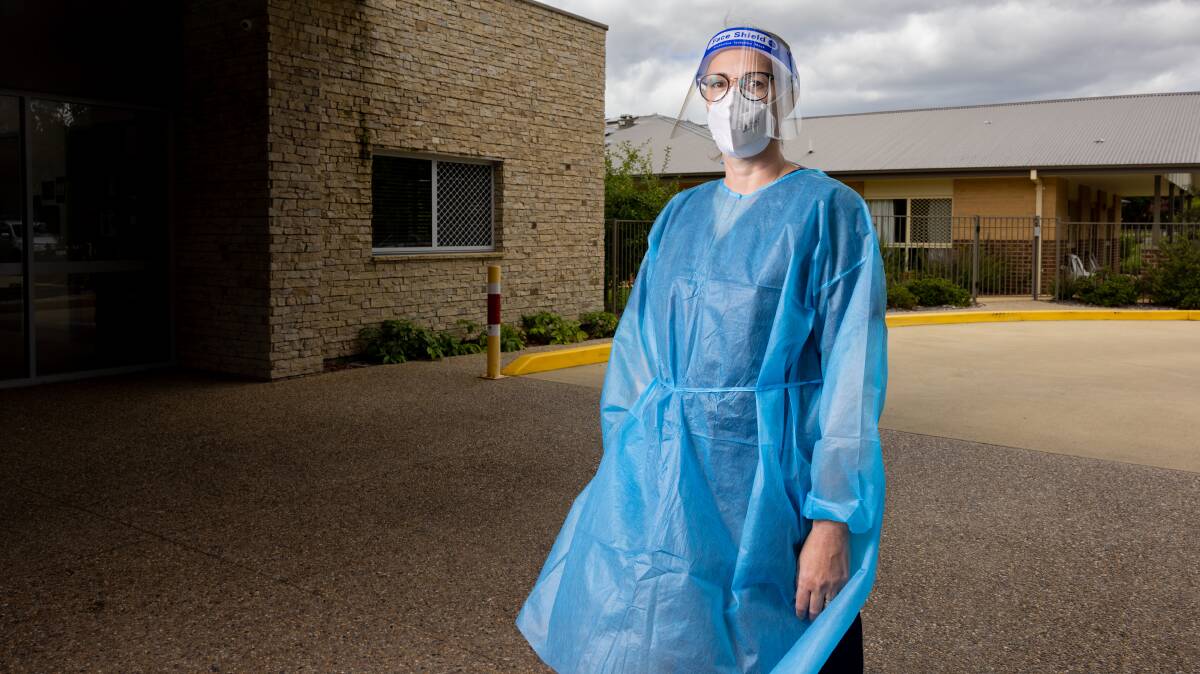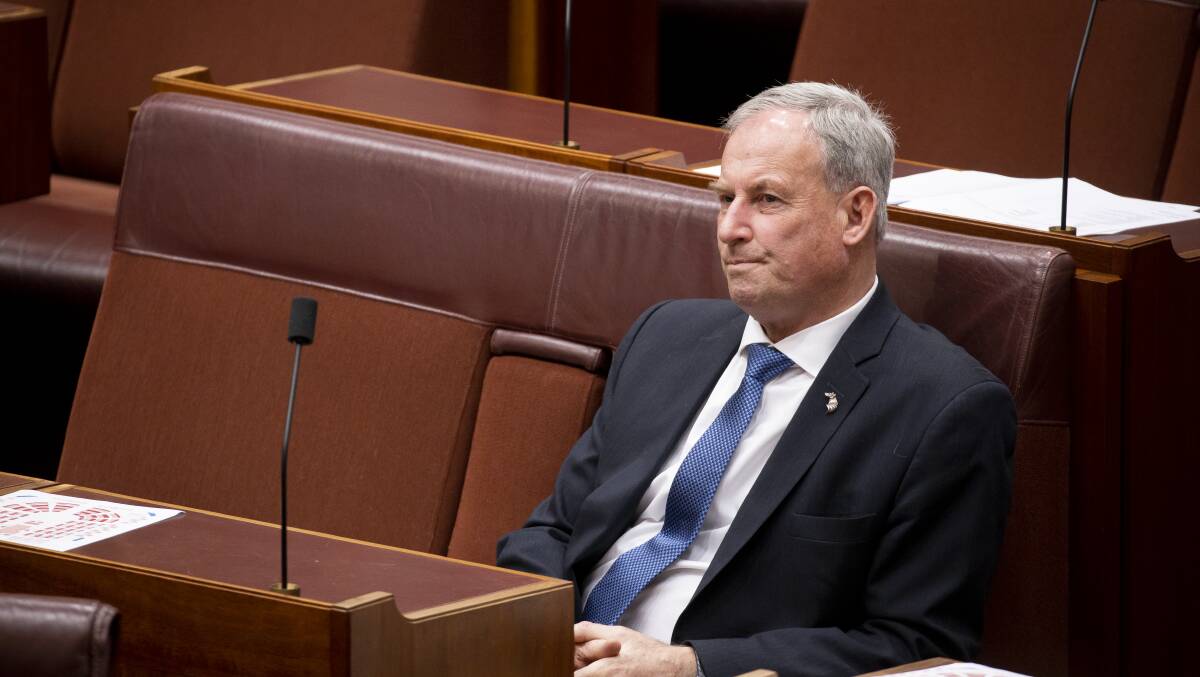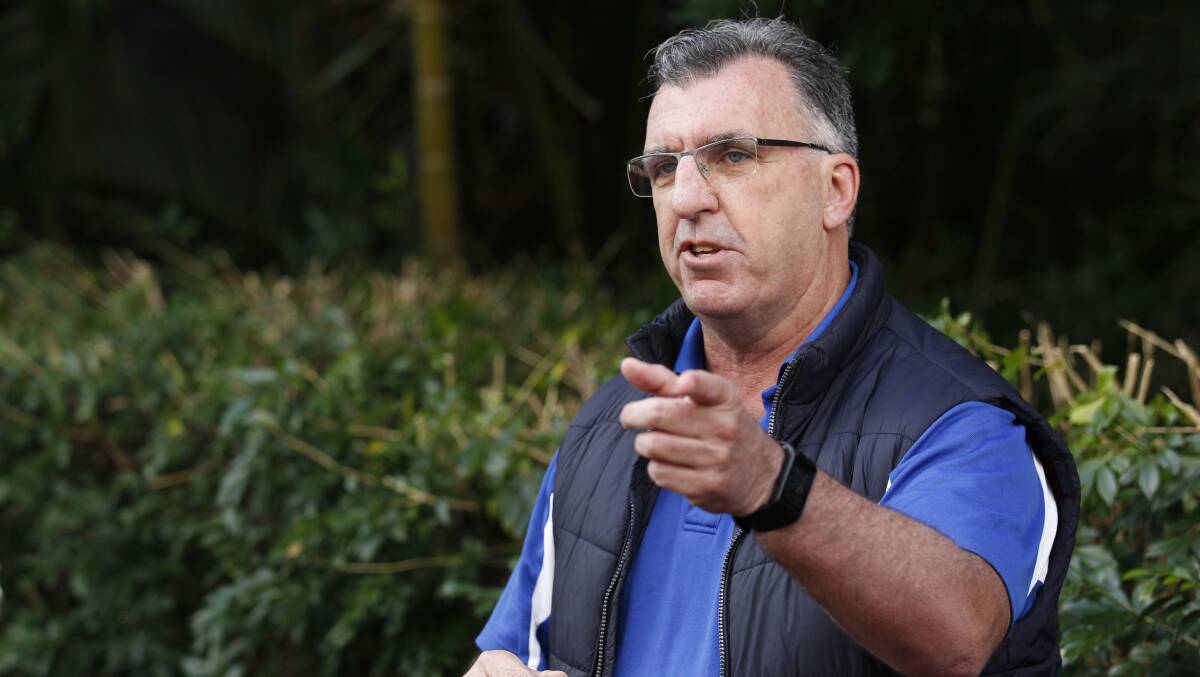
Toward the end of last year, Mark Sewell recalls how staff at Warrigal's nursing homes described feeling as though they were "tiptoeing around a time bomb".
Warrigal's three homes in the Canberra region - in Stirling, Calwell and Queanbeyan - had evaded COVID-19 for almost two years.
But as the highly transmissible Omicron variant was allowed to circulate in a largely restriction-free, but highly-vaccinated Canberra community through December, a sense of foreboding pulsed through the workforce.
At the turn of the new year, the bomb exploded.
Mr Sewell said the first case was confirmed at Calwell on January 1. A day later an infection was detected at its Queanbeyan nursing home. The following day a case was found in Stirling.
At the peak of the January surge, Warrigal's chief executive said 120 staff and 98 residents at the three homes had contracted COVID-19.
Residents had to be locked in their rooms for weeks and forced to go without daily showers due to staff shortages. Visits from relatives were banned on the advice of ACT Health authorities.
EDITORIAL: Our most vulnerable need better than 'blind Freddie'
Staff - including from head office - were pulled off regular duties to deliver basic care.
Relatives of residents were even offered a crash course in infection control so they could help out.
Mr Sewell said pleas to the ACT and federal governments to help with the staff shortages went unanswered.
The outbreaks which engulfed Warrigal's homes in Canberra and NSW have been replicated in nursing homes across Australia, creating a national crisis which has led to hundreds of deaths in just a matter of weeks and the federal minister responsible facing calls to resign.
A federal taskforce has now been set up to shed more light on the deaths amid warnings from Australia's chief medical officer Paul Kelly that more lives will be lost.
Mr Sewell believed the disaster could have been averted. Governments could have delayed reopening until mid-January, he said, allowing time for more residents to receive booster shots and nursing homes to be stocked up with rapid antigen tests and personal protective equipment.
Instead, elderly residents and the low-paid, highly-casualised workforce caring for them were left vulnerable and exposed as Omicron exploded over the festive period.
"Blind Freddie could have seen this was a recipe for disaster," Mr Sewell said.

A dire situation
The numbers, as published by the federal health department, bare out the scale of the crisis.
More than 530 aged care residents have died this year, almost double the number of deaths in the sector through all of 2021.
More than 1170 homes had active outbreaks as of February 4, including 19 in Canberra.
Villaggio Sant' Antonio and Bill McKenzie Gardens in Page have experienced the largest outbreaks, with 35 cases each split across residents and staff.
One death has been reported at each home, as well as at Goodwin Monash.
Two deaths and 95 cases had been reported at Warrigal's home in Queanbeyan.
A "situation report", published earlier this week by a coalition of aged care peak bodies, revealed the enormous toll of the outbreak on the sector's already stretched workforce.
Despite revised isolation rules and a small expansion of the surge workforce, providers had reported about one-quarter of shifts - some 140,000 per week nationwide - were going unfilled.
Prime Minister Scott Morrison has rejected repeated calls from the sector to deploy the Defence Force to fill shifts, arguing it was not a "shadow workforce".
Mr Morrison's stance slightly shifted on Friday, revealing Health Minister Greg Hunt and Defence Minister Peter Dutton had been asked to examine how the Defence Force could support the sector.
In the next breath, he maintained the army was not a substitute workforce.
Mr Morrison also last week announced aged care workers would be eligible for two bonus payments of up to $400 each in the coming months, promised in part to try and stave off an exodus of exhausted staff from the sector.

The Health Services Union, which represents aged care workers in Canberra, dismissed the bonus payments as "trinkets" as it restated the case for a permanent pay bump for the "nation's most deserving workers".
The union's national president Gerard Hayes told The Canberra Times Omicron had cracked a system which had been under pressure for years.
"The staff shortages we see in aged care at the moment are shocking but not surprising," he said.
"This is the consequence of a chronically underfunded sector, staffed mostly by underpaid, insecurely employed women. This problem was a freight train that everyone saw coming for years."
Mr Hayes, a veteran union powerbroker and brother of retiring federal opposition MP Chris Hayes, said Mr Morrison and Aged Care Services Minister Richard Colbeck "wilfully closed their eyes and now we are dealing with the wreckage".
'I don't accept it's in complete crisis'
Senator Colbeck fronted parliament's COVID-19 committee on Wednesday afternoon to answer questions about the crisis unfolding in his portfolio.
The committee had called him to give evidence on January 14, but he resisted on the grounds it would divert resources from the pandemic response.
Revelations the Tasmanian senator and sports minister had been at the Ashes Test in Hobart that same day sparked a furious public and political backlash.
But Senator Colbeck stood by his decision at Wednesday's hearing, stressing he had to balance competing priorities and noting he had participated in aged care-related meetings before attending the cricket.
He rejected Labor senator and committee chair Katy Gallagher's assertion aged care was in "complete crisis".
The under-fire minister argued the sector was performing "exceptionally well" in tough circumstances, as he clung to data which showed infections in aged care had represented a far lower proportion of the overall caseload during the Omicron wave than they did through 2020.
Mr Morrison, speaking on Friday, did use the word crisis to describe the situation in aged care, but insisted the government and sector was doing everything it could.
Federal officials on Wednesday admitted to being in the dark on key details about the aged care situation, including the vaccination status of the deceased. This will be a focus of the new federal taskforce.
About 35,000 aged care residents have yet to receive their booster dose, seen as a vital protection against Omicron.
A range of reasons were offered for why residents might not have received a third jab, including issues with consent or not being at the home when the vaccination provider visited.
Labor leader Anthony Albanese this week called for Senator Colbeck to resign or be sacked, arguing he was "simply incapable of fulfilling the task of looking after the interests of old, vulnerable Australians".
The pressure will only increase when the Federal Parliament returns this week.
The scramble for RATs
Mr Sewell said about 10 to 15 per cent of Warrigal residents had yet to receive a booster shot, but the rate was far higher for workers.
He said the bigger challenge - financially and logistically - had been trying to secure enough rapid antigen tests and protective equipment for staff.
While the Commonwealth had months ago promised to supply testing kits to aged care homes, Mr Sewell said deliveries were only now trickling in. He said Warrigal had already spent $500,000 on kits since November to ensure staff across its 11 homes could be tested daily, in addition to a further $2.4 million on protective equipment.
"We are starting to get sporadic supplies of RATs and PPE from the Commonwealth, but I think they are scrambling. They are just delivering whatever they can find," he said.
"It's starting to look better now, but it's been pretty dire through all of January."
'It's been a nightmare'
After more than two weeks since its most recent positive case, Warrigal Stirling reopened for "restricted visitation" on Thursday.
Residents are permitted just one visitor per week, for a period of up to two hours. The rules will be reviewed after February 13, an email Warrigal management sent to residents and relatives seen by The Canberra Times showed.
The ban on visits has been strictly enforced, causing distress for locked-down residents and their families.
The daughter of one resident, who did not wish to be named, said she was refused access to visit her mother at the home after she suffered a fall earlier this week. She wasn't even allowed to speak to her through the front window.
In response to the claims, Warrigal said it had been following ACT Health advice.
"We continue to, and will, do everything we can to maintain these important connections," it said.
Lynelle Briggs, who presided over the aged care royal commission, this week described cases of elderly residents being locked in their rooms for weeks on end as "unacceptable".
"What we're looking at [for residents] in aged care is months on end with nobody visiting, sometimes dying alone and it shouldn't really be allowed to happen," she told ABC's AM program on Friday.
"The government should have sorted a strategy out to prevent this from happening again."
The Canberra Times has previously reported staff shortages at the Stirling home meant residents weren't receiving daily showers.
A relative of another Warrigal Stirling resident, who asked to remain anonymous, said the situation was a "nightmare".
"If people are incontinent, which a great many elderly people and people with dementia are, changing them is the bare minimum but a shower every day is really essential," the relative said.
Exhaustion and anger
Asked to assign an overriding emotion to the rolling crisis, Mr Sewell offered two.
The first was exhaustion.
More than 680 days have passed since the start of the nationwide lockdown in March 2020. A six-month crisis which became a 12-month crisis has now spanned almost two years - with no clear end in sight.
"I can see people who usually work very hard and enthusiastically just looking exhausted," he said.
The second emotion was anger.
The anger is directed not a those who brought the virus into the homes, nor at the operators who run them. Nor, he said, was it targeted at the the public servants implementing government policies.
He said the finger of blame was being pointed at the federal government, for what he described as an "inability to see they were responsible for making sure the system was strong".
"It's a mystery to me why people who are old, our oldest Australians, who need 24/7 nursing care, and who live in Commonwealth-funded aged care homes, have felt unsupported and neglected," he said.
Do you know more? Contact dan.jervis-bardy@canberratimes.com.au or hannah.neale@canberratimes.com.au.







